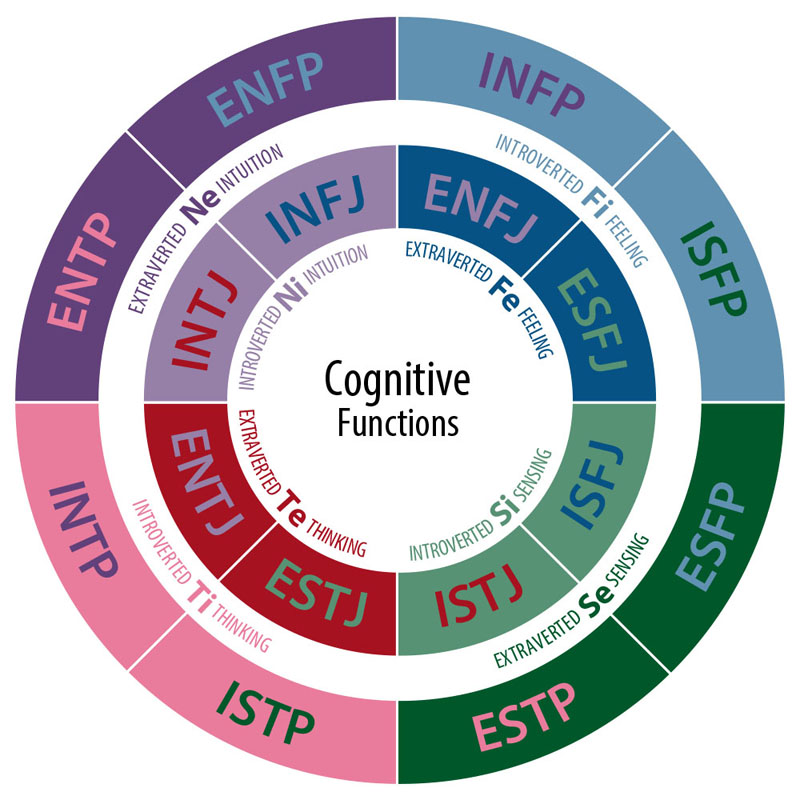Models of Personality
- Personality has to do with individual differences among people in behavior patterns, cognition and emotion. Different theorists present their own definitions of the word based on their theoretical positions.
- A personality trait is a habitual pattern of behavior, thought, and emotion.
- The nomothetic approach involves measures of a relatively large sample.
- The idiographic approach describes studies involving a singular case, or, in other words, case studies.
- Personality type refers to the psychological classification of different types of individuals involving qualitative differences between people.
- According to one type theory, a type A personality is more competitive, outgoing, ambitious, impatient and/or aggressive.
- According to one type theory, a type B personality is more relaxed. They are noted to live at lower stress levels. When faced with competition, they may focus less on winning or losing.
- In his 1967 book Dimensions of Personality, Hans Eysenck provided a two-dimensional space to describe differences in behavior with two personality dimensions, extraversion and neuroticism.
- Jeffrey Gray, a former student of Eysenck, developed the five-factor model of personality traits, the most widely used model of personality. The traits are openness, conscientiousness, extraversion, agreeableness, and neuroticism.
- Openness to experience is one of the domains describing personality in the Five-Factor Model. It involves six dimensions, including active imagination, aesthetic sensitivity, attentiveness to inner feelings, preference for variety, and intellectual curiosity.
- Conscientiousness is the personality trait of being thorough, careful, or vigilant, implying a desire to do a task well, to act in an efficient and organized manner as opposed to being easy-going and disorderly.
- Extraversion is the personality trait of tending to be outgoing, talkative, and energetic.
- One of the five major dimensions of personality structure, agreeableness is a personality trait manifesting itself in individual behavioral characteristics that are perceived as kind, sympathetic, cooperative, warm and considerate.
- Neuroticism is a fundamental personality trait in the study of psychology characterized by anxiety, fear, moodiness, worry, envy, frustration, jealousy, and loneliness.
- In the personality trait theory of Gordon Allport, a cardinal trait is the trait that dominates and shapes a person's behavior. These are the ruling passions/obsessions, such as a need for money, fame etc.
- In the theory of Gordon Allport, a central trait is a general characteristic found in some degree in every person. These are the basic building blocks that shape most of our behavior although they are not as overwhelming as cardinal traits. An example would be honesty.
- In the theory of Gordon Allport, a secondary trait is a characteristic seen only in certain circumstances (such as particular likes or dislikes that a very close friend may know). They must be included to provide a complete picture of human complexity.
- Functional autonomy is the idea that drives can become independent of the original motives for a given behavior.
- In the three level model of personality of Dan McAdams, traits are a person's general tendencies while characteristic adaptations are a person's desires, beliefs, concerns, and coping mechanisms.
- The theory of narrative identity postulates that individuals form an identity by integrating their life experiences into an internalized, evolving story of the self, which provides the individual with a sense of unity and purpose in life.
- Need theory, proposed by psychologist David McClelland, is a motivational model that attempts to explain how the needs for achievement, power, and affiliation affect the actions of people.
- The Minnesota Multiphasic Personality Inventory (MMPI) is the most widely used and researched standardized psychometric test of adult personality and psychopathology.
- The Myers-Briggs Type Indicator (MBTI) is an introspective self-report questionnaire designed to indicate psychological preferences in how people perceive the world and make decisions.
- A projective test is a personality test designed to let a person respond to ambiguous stimuli, presumably revealing hidden emotions and internal conflicts projected by the person into the test.
- The Rorschach test is a psychological test in which subjects' perceptions of inkblots are recorded and then analyzed using psychological interpretation, complex algorithms, or both.
- The Thematic Apperception Test (TAT) is a projective psychological test in which the subjects' responses, in the narratives they make up about ambiguous pictures of people, are proposed to reveal their underlying motives, concerns, and the way they see the social world.

Personality research conducted on twin subjects suggest that both heritability and environmental factors contribute to the Big Five personality traits.


